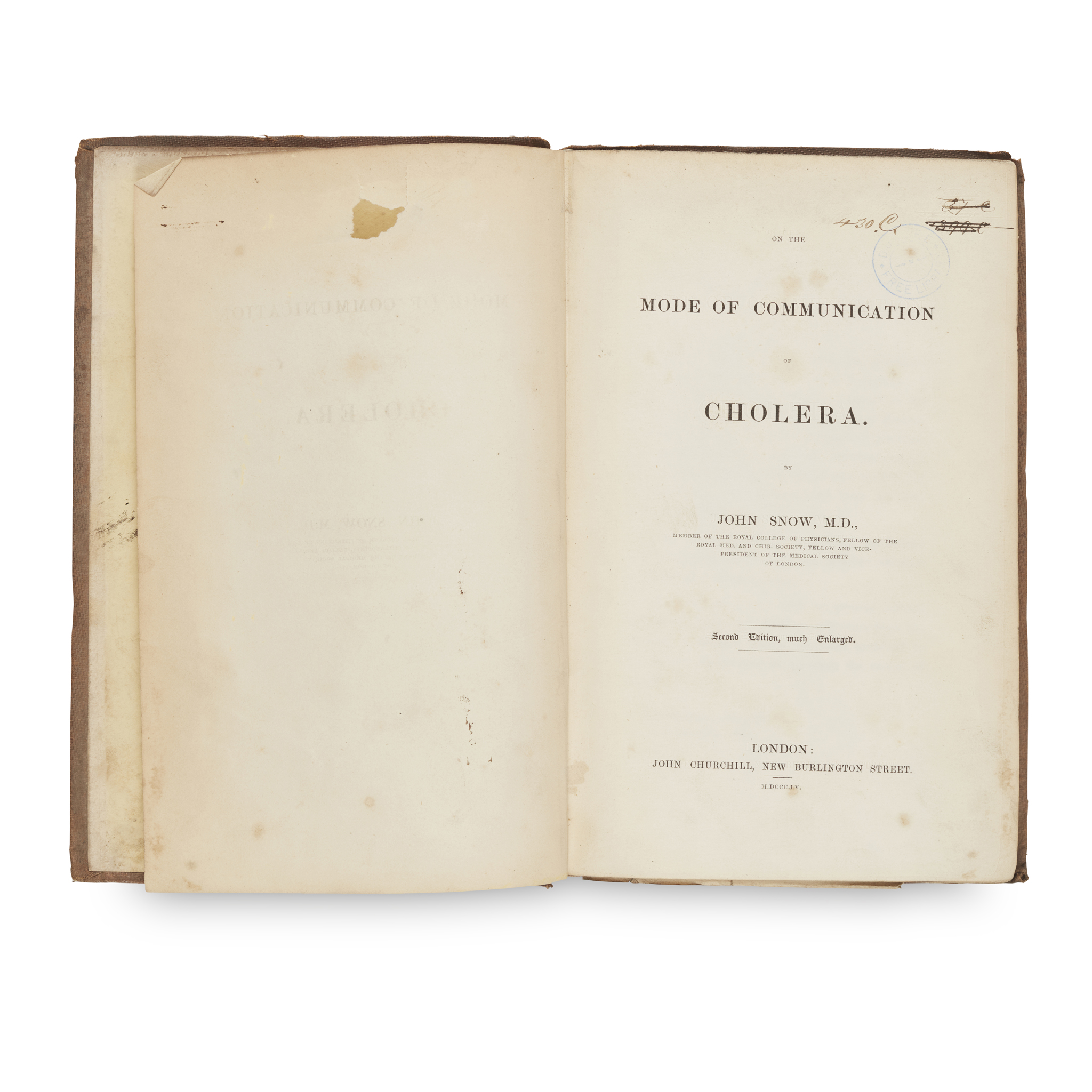Snow, John
On the Mode of Communication of Cholera
£18,900
Auction: 19 September 2024 from 10:00 BST
Description
London: John Churchill, 1855. 8vo (23 x 15cm), second edition (preferred and greatly expanded edition, the first with the famous Broad Street Pump map), 2 folding lithographed maps by Cheffins, the second in colour, letterpress tables, without publisher's catalogue, original blind stamped ripple-grained purple cloth, lacking spine, old bookplate of the Dundee Free Library to paste-down endpaper, small library stamp and catalogue number in ink to title-page, small stamps to front and reverse of each map and to final page, small hole to front-free endpaper, 16cm closed tear to Broad Street Pump map with no loss, small closed tear to the second map, a little foxing and some dust-soiling
Footnote
As a young apprentice surgeon and medical student in the 1830s in Newcastle upon Tyne, John Snow attended to cholera sufferers at the Killingworth Colliery. The disease, which thanks to Snow’s research, we now know is spread through consuming contaminated food and water, piqued the young doctor’s interest and inspired his later studies.
By 1844, Snow had relocated to London and graduated university with a degree in medicine. He was admitted as a member of the Royal College of Physicians in 1850 and was present in the city for both the Soho cholera outbreaks of 1849 and 1854.
1850s Soho was a somewhat unsanitary place to live – cesspits beneath homes were common, as the city’s sewer system had not yet reached the area. The 1854 cholera outbreak was the third of its kind in the area within the space of 25 years and it was clear that there was a severe health problem in the area. The medical community – including the General Board of Health – generally agreed at the time that illness was caused by miasma, however Snow suspected differently. He had published his first edition of On the Mode of Communication of Cholera in 1849, arguing against ‘bad air’ as a cause of cholera. In 1854, Snow began to further his epidemiological research, with the help of Reverend Henry Whitehead, by simply speaking with the residents of Soho and recording his findings.
John Snow mapped the cholera deaths in the area. He discovered that most of the deaths were in the vicinity of Broad Street and the key factor which linked them all was access to the local water pump. His careful mapping and convincing argument persuaded the council that the contaminated water (from a nearby cesspit) was the cause of the disease, and the subsequent disabling of the pump vastly reduced the number of affected patients.
Snow’s On the Mode of Communication of Cholera was published in second edition, much enlarged and with the crucial addition of maps, including that of the Broad Street pump contamination area. The work can be considered one of the founding texts of modern epidemiology and has undoubtedly saved thousands of lives.

